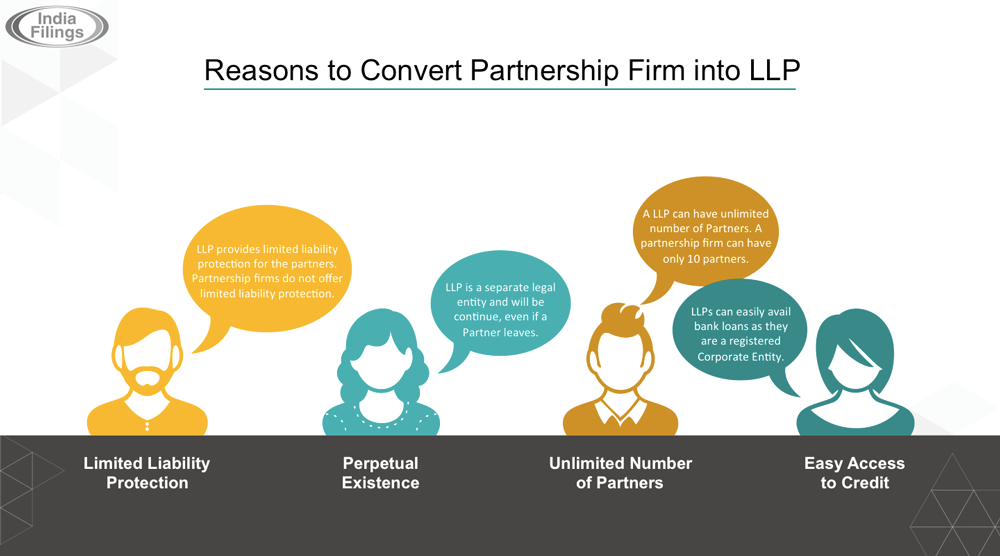 Updated on: February 25th, 2020 11:36 AM
Updated on: February 25th, 2020 11:36 AM
Conversion of Partnership Firm into LLP
 Reasons-to-Convert-Partnership-Firm-into-LLP
Reasons-to-Convert-Partnership-Firm-into-LLP
Limited Liability for Partners
Perpetual Existence
Unlimited Partners
Better Access to Credit
Potential for Growth
Popular Post

In the digital age, the convenience of accessing important documents online has become a necessity...

The Atalji Janasnehi Kendra Project that has been launched by the Government of Karnataka...

The Indian Divorce Act governs divorce among the Christian couples in India. Divorce...

When an individual has more than a single PAN card, it may lead to that person being heavily penalised, or worse,...

Employees Provident Fund (PF) is social security and savings scheme for employee in India. Employers engaged...


